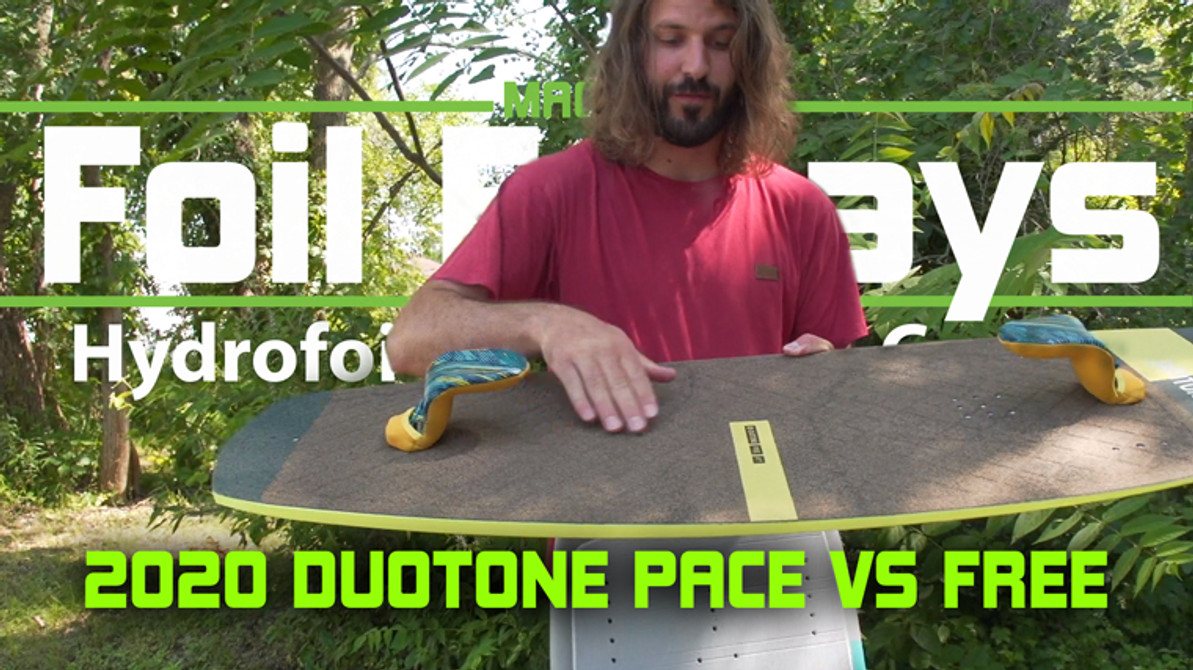Duotone Pace VS Free: Hydrofoil Board Comparison - Foil Fridays
Duotone has really stepped up their Hydrofoil and Foil board game for the 2019/2020 season. Two of our favorite new Duotone hydrofoil products are the Pace and Free foil boards. They both feature a quality design and construction for beginner to advanced riders. In this video blog, we will walk through their similarities and differences and point out how that will affect your foilboard experience.
Surfboard or Twintip construction
The easiest difference to spot on these boards is the construction method. The Pace and the predominant amount of foil boards have a surfboard style foam core construction. This provides a damp feeling, smooth ride with a bit of buoyancy to help the board float the rider and surface in waves.
The Free board and only a handful of others use a twintip style wood core/ sidewall construction. This construction method gives you a strong, durable board that is immune to the surfboard type minor dings and provides a strong core for thinner designs without the need for expensive reinforcements. For those people traveling or generally neglectful of their equipment, this construction is ideal since it is harder to damage and more tolerant of water damage. The Free board for instance features a paulownia wood core ideal for maximum strength, light weight, and water resistance in the case of a small ding during a trip. The additional benefit of this construction they can serve as dual purpose directional type skim/wave boards for added finless fin when you take off the foil. The Free board is even functional as a lightwind style board in the larger sizes. The Free board is almost as fun foil-less as it is with the foil for strapless skim style board fun!
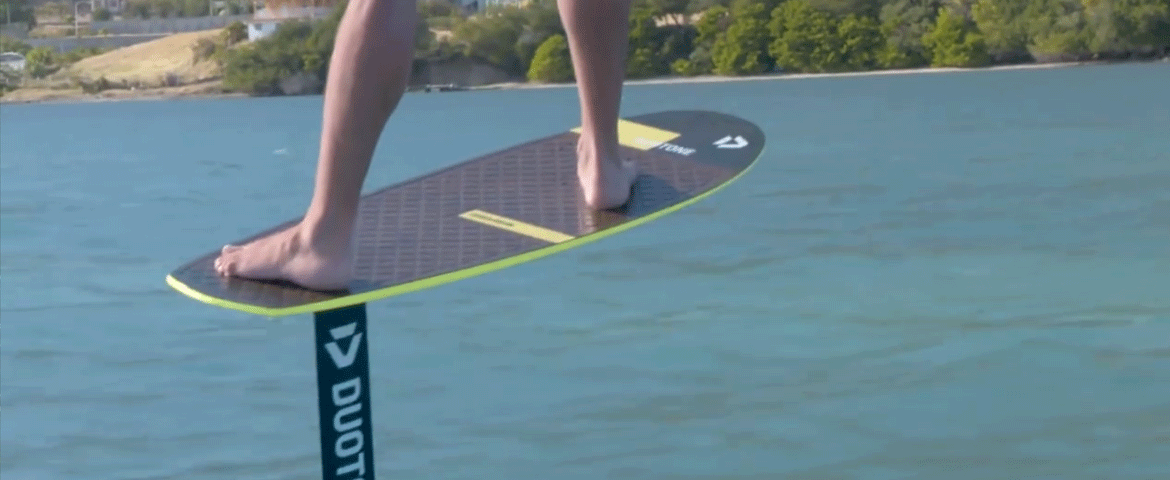
Dimensions
These hydrofoil boards have similar outline dimensions, but when you turn them sideways the thickness/volume is drastically different. The Free’s design will allow for an easier strapless board start because it sits lower in the water, similar to a twin-tip. As a result, new foilers may find it easier to start with. The Free, is quite thin at only ⅝”, but is thick enough to provide a nice rigid interface to control your foil. Some thinner wood core options are simply too limp and torsionally soft for heavy riders to properly control the foil.
The Pace holds more volume at 2.38” and 2.13” thicknesses. This gives the board a more familiar feel for directional surfboard riders and obviously more buoyancy for those wavy days. The extra material and foam core give the board a more dampened feel. So while it transfers energy just as efficiently as its thinner wood core brother, the Pace is a smoother ride.
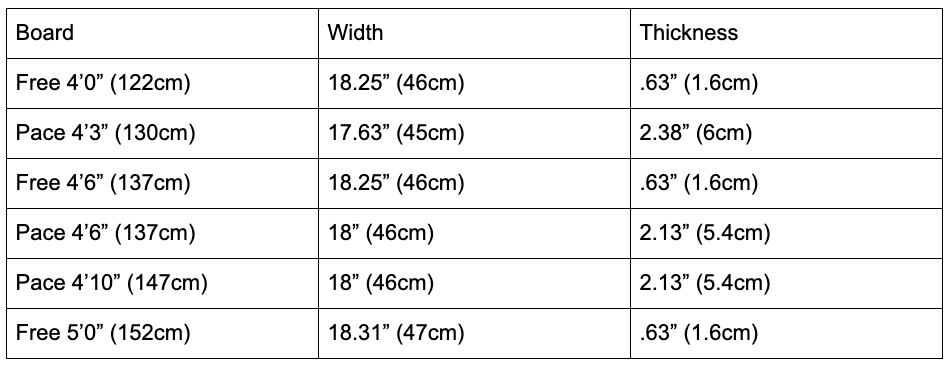
As with all other boards, picking the right size will be influenced by your weight, riding style, wind, and foil size. We recommend reaching out to us for a personalized recommendation for the most accurate suggestions.
Foil Mounting / Compatibility
The Duotone Pace and Free foil boards mount the foil to the board in different ways. The Pace uses the industry standard 90mm track that will accept the vast majority of hydrofoils on the market and allow for roughly 4” or fore/aft adjustment. That can be a nice feature depending on your weight, foil design, and strap preferences.
However, the 2019/20 Duotone Free board does not have enough thickness to support the track boxes. As a result, Duotone has used a 165x90mm fixed mounting pattern of threaded stainless steel inserts. This allows for a strong connection to the core as well as a simple, straightforward interface. All well and good as long as your stance lines up with the fixed position and your foil uses the 165x90mm adjustment. However, brands such as Cabrinha, Liquid Force, and Cloud IX will not be compatible due to their smaller bolt patterns.
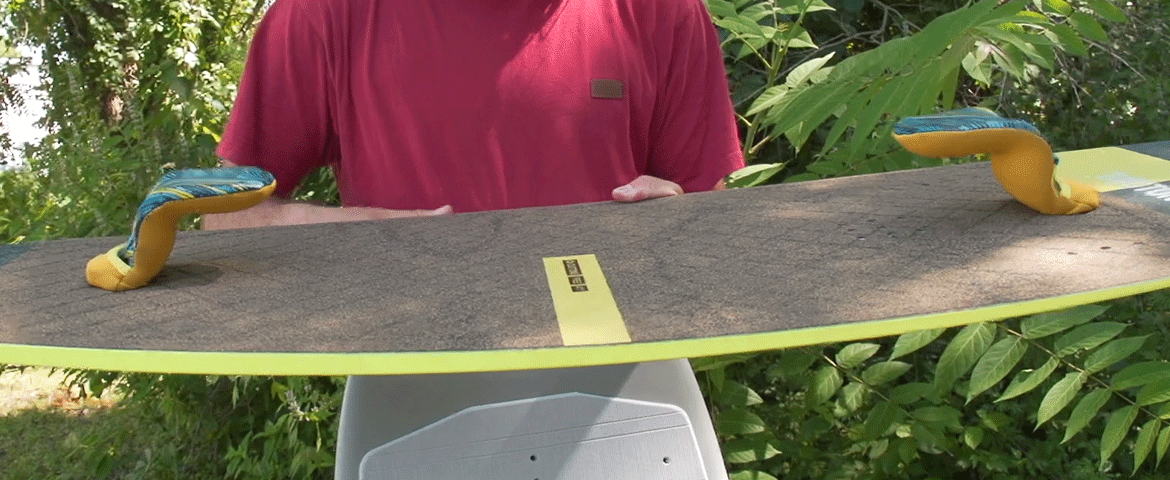
Footstrap and Hook Position
Both the Pace and Free Hydrofoil boards offer the option of two or three strap orientation in a number of different stance widths. Both boards strap mounting positions can be problematic depending on the foil you are using and your preferred stance width. This is primarily due to the above average stance width on the board paired with the very “tailward” position of the rear strap holes with respect to the foil mounting position.
I want to be clear, this will only affect a certain amount of people. If you have short legs, ride a large foil, and you prefer to ride with a rear strap, you may want to have a conversation with us before purchasing. Riders who go strapless will have no issues . Those riding faster foils with average to long legs should be just fine as well.
I have long legs but I do ride high lift foils quite often. When I want to ride straps or hooks for jumping, I have issues. One work around I have found is to put a foot hook in the front strap holes to position my back foot in a better spot over the mast. This does narrow my stance a bit but with a strap or another hook in the frontmost position I find it perfectly acceptable due to that abnormally wide strap position. I am 6’3” so that should work for other riders as well.
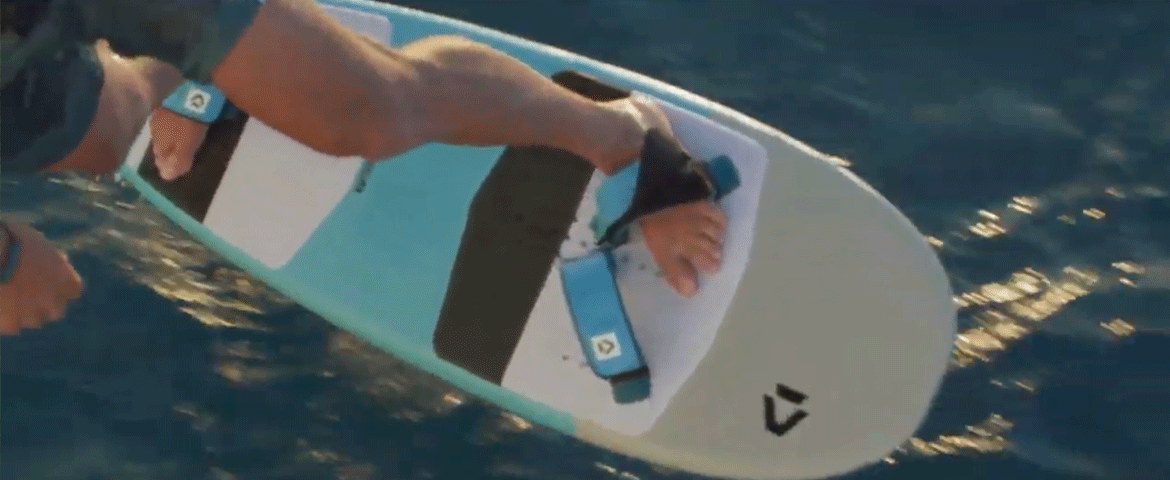
One difference between these two boards as far as foot straps or foot hooks are concerned are the mounting inserts and screws. The Pace features the standard surfboard/foilboard style polymer inserts that take self tapping wood/poly type screws.
Again, due to the Free foilboard being thinner, the Free inserts cannot be placed deep enough for the standard type screws. As a result, they feature a stainless M6 insert that should be used with the proper length M6 screws. If you purchase the Duotone surf strap w/ M6 screw set, you’ll be all set to go. If you wish to use different straps or foot hooks, you’ll have to find the proper length m6 stainless screw at a hardware store. I find that 8mm of protruding length is about right for this board. For instance, let's say you have a strap that is 12mm thick, you’ll need an M8x25mm stainless screw.
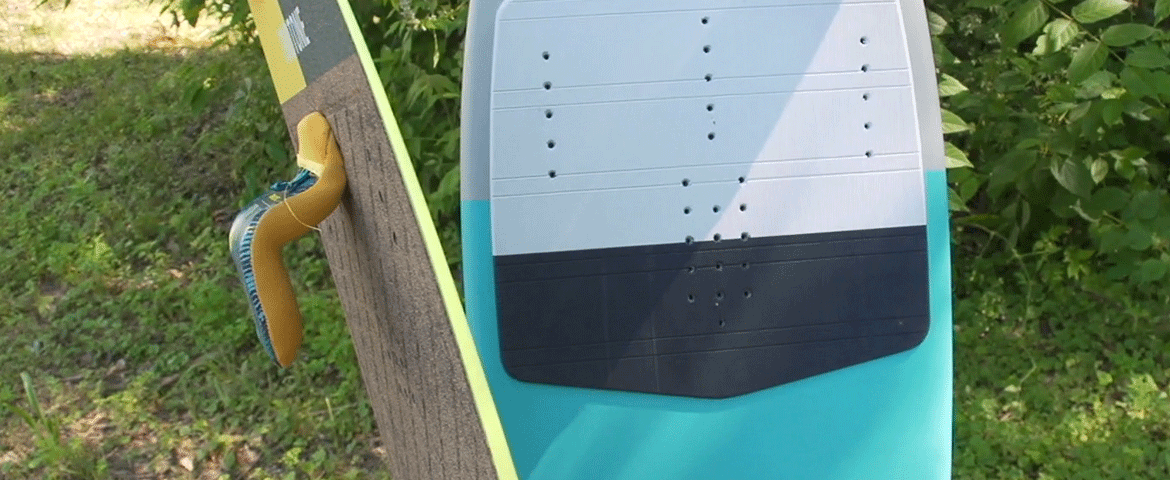
Traction
Yet another difference between these two boards is the traction. The Duotone Free kite foilboard features a full length cork deck. Compared to last year, it is thicker and has textured diamonds that increase comfort and traction. The cork deck is super grippy when wet and provides easy foot movement when you want it. Kind of like skateboard grip tape, only soft on your feet. An additional benefit is immediate feedback in/out of your foil. The Free board connects you directly to what your foil is doing and gives you lightning fast energy transfer. Like a sports car, this is great for performance but is not as comfortable on your feet if you are a marathon session kind of rider.
The Pace features a traditional EVA type traction in front and rear foot sections. The pad is a thick brushed type pattern with great comfort and grip for a cadillac type luxury feel. My only gripe with this design is the six inch strip of board in the middle that lacks traction. Being a freerider, I often find my feet in that position when cruising or during transitions. I always have that in the back of my mind and worry about slipping. Not that I ever have, actually the board texture is quite easy to stand on and could easily be remedied with a strip of traction or some surf wax. On the positive side of things, it does give your feet some “board braille” so you can reference your stance position without looking down.
Written and produced by Tucker Vantol, Ryan (Rygo) Goloversic
Tucker Vantol
Mackite's resident surf and "Hydrofoil junkie." You can either catch him on the phones or on the water at dawn testing new gear. He is proficient at a myriad of sports, a shaper and passionate about getting his water time. When he discovered kiteboarding it took over as his predominate sport. The same could be said about hydrofoiling.
Recent Posts
-
Kiteboarding | Crafting the Harlem Force Kite with Sustainability and Performance
Unparalleled Performance Meets Unmatched Sustainability The kiteboarding industry is on …24th Apr 2024 -
Duotone Ventis 2025 | What's New?
If you're familiar with Duotone's Ventis, you know its specialty is freeriding in light wind …23rd Apr 2024 -
Duotone Ventis D/LAB 2025 Overview
If you ride in an area with multiple light wind days and need a wing that'll let you get o …23rd Apr 2024

